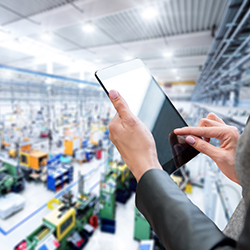The commercial real estate industry is changing and the driving force behind it is new, advanced technology. With the rise in popularity of smartphones and tablets, connectivity is easier than ever, information is instantaneous, and processes are becoming more efficient as a result. Brand new office buildings across the country are being built with the latest and greatest technological gadgets that can increase customer satisfaction, make buildings more energy-efficient, and ultimately save on operating costs.
But what about landlords of older buildings? Should they disregard this new technology just because their building is not modern? In my opinion, I don’t think they should.
As an example, one of my clients owns an office property in Dayton, Ohio, that was built in 1970. The control system on the building is a pneumatic system and the building uses a boiler and compressor for heating and cooling. The cost to upgrade and install digital controls for the system was significant and the owner couldn’t justify the expenditure. When there was a malfunction, the owner had to wait for a tenant complaint to initiate repairs. In addition, he was paying an excessive amount for service calls trying to diagnose the issue and then dispatching the appropriate service technicians for repairs.
After doing some research, the owner discovered that there are many different types of sensors currently on the market that could help alleviate these issues and initiate cost savings by monitoring anything from temperature, humidity, voltage, vehicle, seat occupancy, light, motion, door sensors, and water detection.
After weighing his options, my client decided to install a relatively inexpensive monitoring system for the mechanical systems. The system included four-to-five wireless sensors and a wireless gateway that would monitor outside air, mixed air, water temperature, water leak detection, and current building temperatures.
The monitoring system is programmed to send email and text message alerts when the system goes into an alarm. The alarm criteria are easy to setup and can be as complex or simplistic as you wish. This building’s system is set up to monitor/alarm in cold weather differently than warm weather. My client can now log in from any web-accessible remote device to check the status of the systems and the battery levels of the sensors. The system has paid for itself in both better diagnoses and reduced tenant complaints, as now the repair is usually already in process before a tenant complaint is lodged.
The benefit of big data doesn’t have to only be exclusively for modern properties and there are many cost-effective options that could help lower operating costs in the long run. Just because you own an older building, don’t pass on the benefits that these systems might provide. It is working for my client and perhaps it could work for yours as well.






